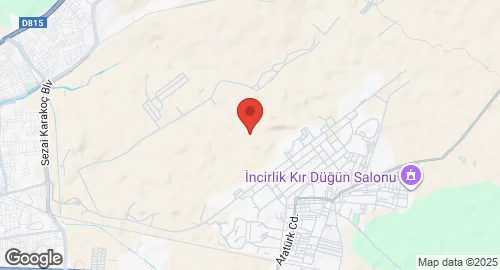Incirlik Air Base
Summary
| Operating Country | 🇺🇸 United States |
| Location | 🇹🇷 Turkey |
| Status | ◉ Active |
| Usage | Military only |
| Year built | 1951 |
| Operating Organization | US Air Force |
| Units |
|
Description
Incirlik Air Base, also known as İncirlik Hava Üssü, is a Turkish air base situated in the İncirlik quarter of Adana, Turkey. Located 10 km east of the city core and 32 km inland from the Mediterranean Sea, the base spans slightly over 3320 acres (1335 ha). It is a joint Turkish and United States airbase, primarily utilized by the Turkish Air Force (TurAF) and the U.S. Air Force (USAF). The base also sees occasional use by the Royal Air Force and the Royal Saudi Air Force, and hosts the 74th Anti-aircraft Artillery Regiment (Patriot unit) of the Spanish Army. The main units stationed at Incirlik are the 10th Tanker Base Command (TurAF) and the 39th Air Base Wing (USAF). The base features one 3,048 m (10,000 ft) concrete runway, designated 05/23, and approximately 57 hardened aircraft shelters. Tactical nuclear weapons, including up to 50 B61 nuclear bombs, are stored at the base.
Construction of Incirlik Air Base began in the spring of 1951 by the U.S. Army Corps of Engineers, with the base becoming operational in 1955. Initially named Adana Air Base, it was renamed Incirlik Air Base in 1958. Throughout the Cold War, it served as a critical strategic reconnaissance hub, particularly for U-2 aircraft missions over the Soviet Union. The base played a role in the 1958 Lebanon crisis and later became a significant training site for various U.S. Air Force aircraft types. An arms embargo imposed by the U.S. Congress in 1975 led to the temporary suspension of non-NATO activities. Post-embargo, normal operations resumed, and the base supported operations during the First Gulf War, humanitarian relief efforts like Operation Provide Comfort, and Operation Northern Watch. Following the September 11, 2001, attacks, Incirlik became a main hub for Operation Enduring Freedom missions and later supported the Iraq War. In recent years, it has been used for operations against the Islamic State in Syria, though German forces relocated from the base in 2017 due to diplomatic disagreements. During the 2016 Turkish coup attempt, external electrical power was disconnected, and a no-fly order was briefly put into effect, leading to the arrest of the base commander.
